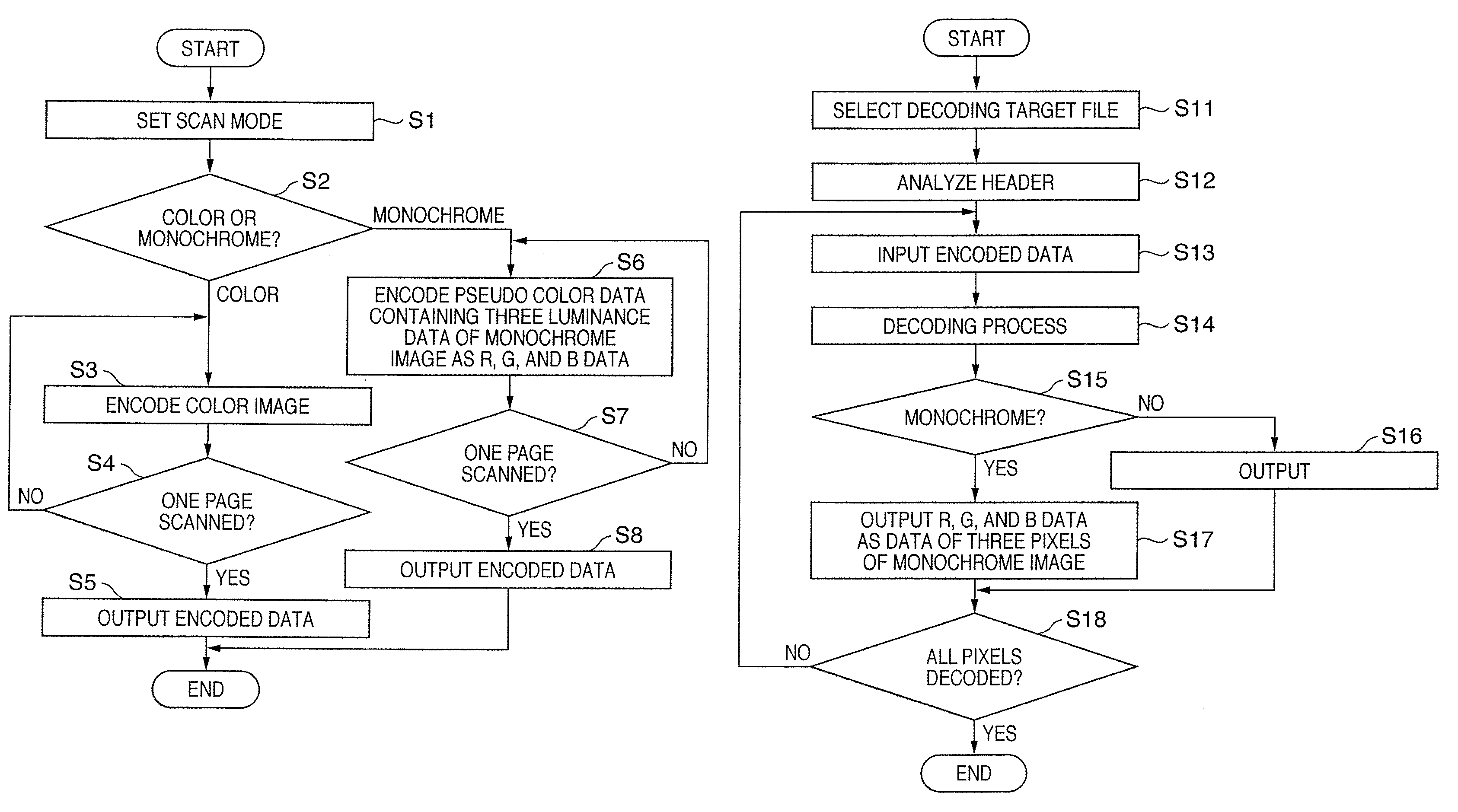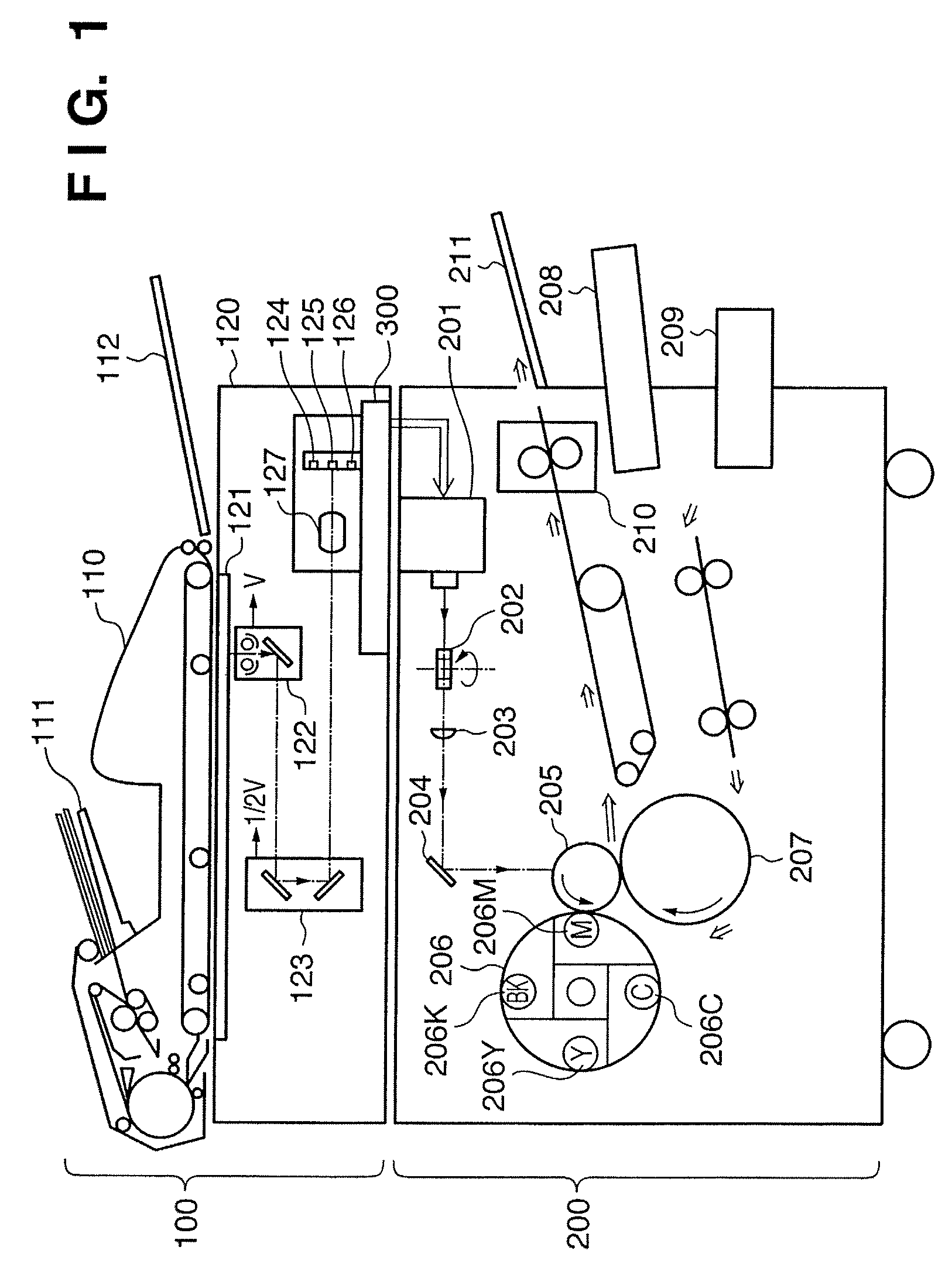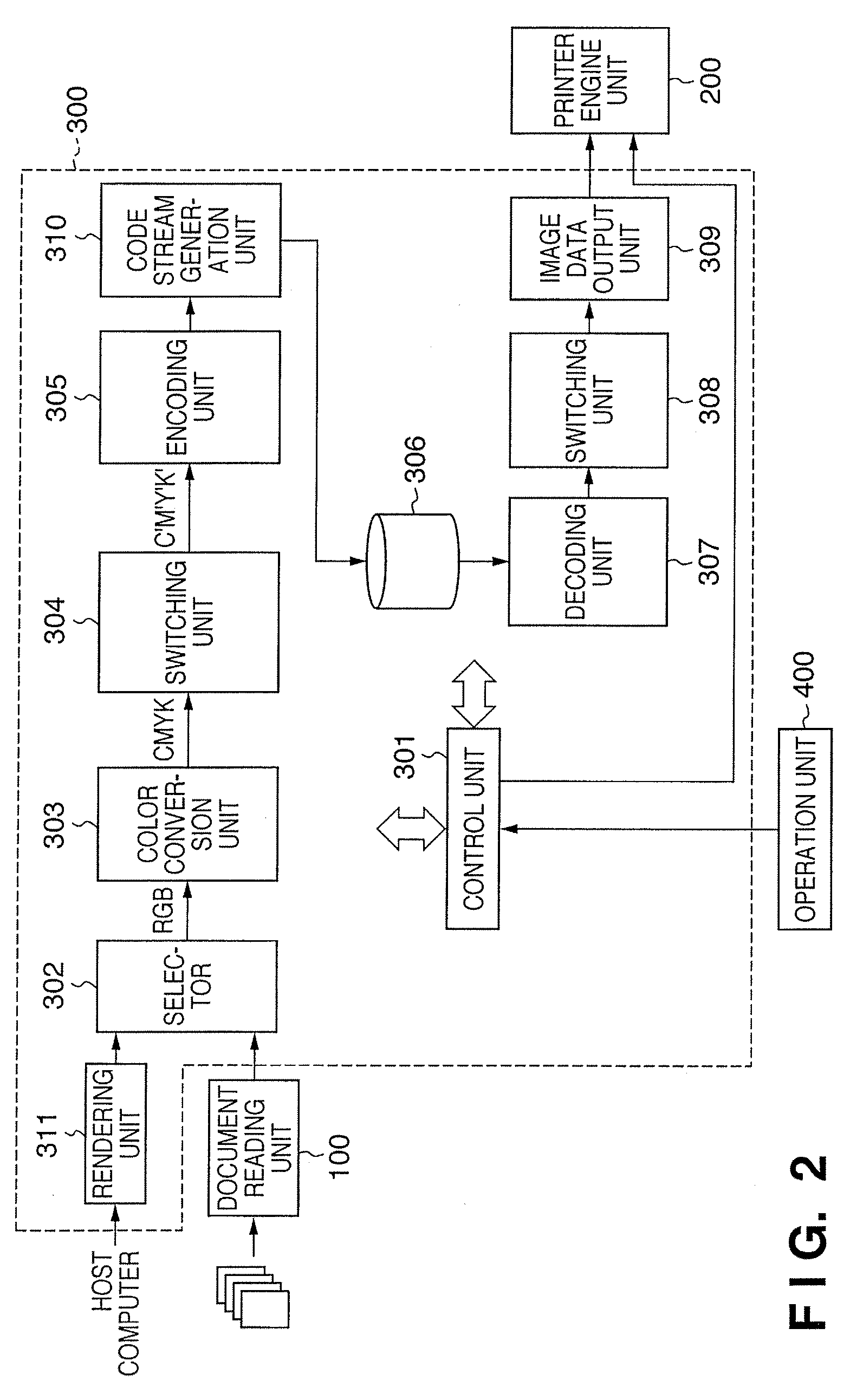Image processing apparatus and control method thereof with color data and monochrome data selection
a color data and monochrome data technology, applied in the field of image data compression coding technique, can solve the problems of deteriorating compression efficiency, difficult to use color encoders, and redundancy perceptible,
- Summary
- Abstract
- Description
- Claims
- Application Information
AI Technical Summary
Benefits of technology
Problems solved by technology
Method used
Image
Examples
modification to first embodiment
[0099]In the above-described embodiment, the present invention is applied to a copying machine. An example wherein the present invention is applied to an application on an information processing apparatus such as a personal computer will be described below.
[0100]FIG. 5 is a block diagram of an information processing apparatus. Referring to FIG. 5, a CPU 601 controls the entire apparatus. A ROM 602 stores a BIOS and a boot program. A RAM 603 serves as the work area of the CPU 601. A hard disk drive 604 stores an OS (Operating System) and various applications (including an application program of this modification) and holds data files created by the various applications. Reference numeral 605 denotes a keyboard & mouse. A display control unit 606 incorporates a video memory and a controller to execute rendering on the video memory and outputs a video signal to a display device 607. The display device 607 can be either a CRT display device or a liquid crystal display device. Reference ...
second embodiment
[0121]In the first embodiment and its modification, JPEG-LS is used as a lossless encoding technique. JPEG-LS partially uses run-length encoding in the encoding process. Run-length encoding is efficient when pixels of the same color continue in the scan direction (horizontal direction). In the first embodiment and its modification, however, in encoding a monochrome grayscale image, a pixel having four or three pseudo components is generated in correspondence with every four or three pixels. Hence, the probability that pseudo color pixels with the same value continue in the horizontal direction is low. That is, the compression ratio of a monochrome grayscale image is low.
[0122]In the second embodiment, as shown in FIG. 8, data at the same main scanning coordinates in four horizontal lines of a grayscale image are output to an encoding unit 305 as pseudo C, M, Y, and K color components, thereby encoding the image data.
[0123]The apparatus arrangement of the second embodiment is the sam...
third embodiment
[0128]The second embodiment raises the run-length encoding efficiency. However, lossless encoding includes not only run-length encoding but also predictive encoding. In encoding based on a reference window of predictive encoding or autocorrelation considering rotation, the horizontal to vertical aspect ratio of an encoding target image falls out of balance, and the encoding efficiency lowers at a high probability.
[0129]In the predictive encoding method, normally, a preceding, upper, upper left, or upper right reference window (symmetrical in the horizontal and vertical directions) is used for a pixel of interest. If there is a deviation from an aspect ratio assumed by the window, a calculated predicted value contains an error, and the prediction error becomes large. It is therefore understandable that in using predictive encoding, the process of the first or second embodiment makes the aspect ratio of pseudo C, M, Y, and K images fall out of balance, and the compression ratio become...
PUM
 Login to View More
Login to View More Abstract
Description
Claims
Application Information
 Login to View More
Login to View More - R&D
- Intellectual Property
- Life Sciences
- Materials
- Tech Scout
- Unparalleled Data Quality
- Higher Quality Content
- 60% Fewer Hallucinations
Browse by: Latest US Patents, China's latest patents, Technical Efficacy Thesaurus, Application Domain, Technology Topic, Popular Technical Reports.
© 2025 PatSnap. All rights reserved.Legal|Privacy policy|Modern Slavery Act Transparency Statement|Sitemap|About US| Contact US: help@patsnap.com



